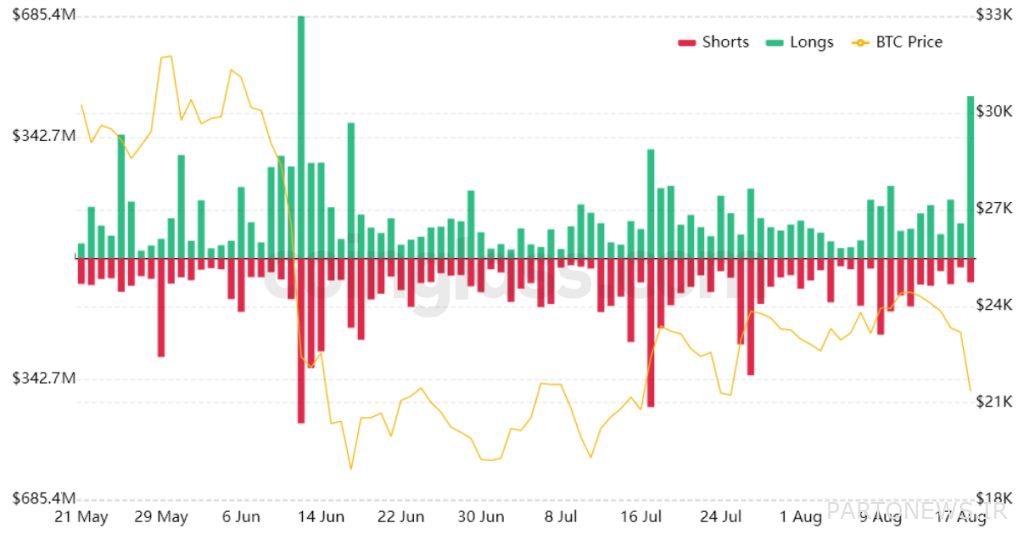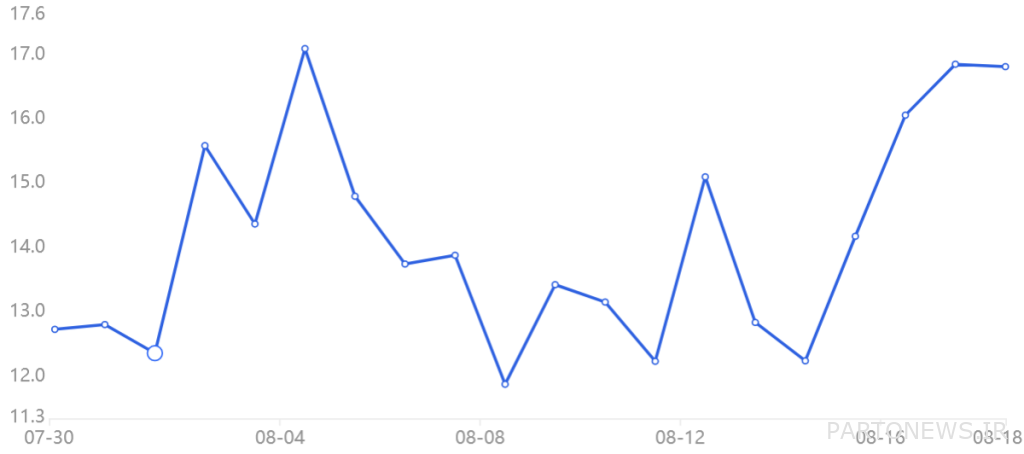3 reasons for the fall of Bitcoin yesterday; Will the market situation worsen?

The total value of the digital currency market on Friday, August 19 (August 28), decreased by 9.1%; But more importantly, the market capitalization reached the psychological support of $1 trillion. Investors had forgotten that the last decline in market value occurred less than 3 weeks ago, when on June 18 (June 28) this index reached about 780 billion dollars; But has the upward trend of recent weeks stopped and the market situation can still get worse?
To Report After the US House Energy and Commerce Committee announced on August 17 that it is deeply concerned about the increased demand for fossil fuels to power the mining of proof-of-work digital currencies, Cointelegraph reported. It also increased compared to the upcoming legislations. As a result of these concerns, US lawmakers have asked cryptocurrency mining companies to provide information on their energy consumption and average costs.
Typically, overall price declines (caused by increased selling pressure) have less impact on the price of Bitcoin and the top 4 cryptocurrencies than other market assets. However, this market correction resulted in a 7-14% drop in the price of the top cryptocurrencies. Bitcoin fell 9.7% after reaching $21,260, and Ethereum fell 10.6% to its daily low of $1,675.
Some analysts believe that considering Bitcoin’s annual volatility of about 67%, the formation of such drastic corrections in the daily time frame is a normal thing. For example, during the past 365 days, the daily decrease in the total market value has exceeded 9% in 19 days (such as August 28); But the presence of some factors have made the recent fall seem more prominent than the past falls.
Bitcoin futures trading premium reaching zero
Typically, monthly Bitcoin futures contracts trade at a small price difference or premium to the spot (cash) market; Because sellers demand more money to push back the settlement date of transactions for a long time. This situation is not unique to the digital currency market and is known as Contango in the financial markets.
In this situation, the futures price of a commodity is higher than its spot price and usually occurs when traders expect the price of the asset to increase over time. In healthy markets, futures contracts are traded at an annual premium of 4-8%, which is enough to compensate for risks and capital costs.
The zeroing of Bitcoin futures trading premiums in the OKX and Deribit exchange, along with the 9.7% price drop of this digital currency, has caused the investors’ optimism to use derivative markets to disappear. When the index in the chart above enters the negative area, the inversion stage (Backwardation) occurs. This means that the price of futures contracts is lower than that of spot contracts and there is more demand to open short leverage trading positions that count on further price reductions in the future.
Liquidation of 470 million dollars of traders
Futures contracts are a relatively low-cost and easy-to-use leveraged tool for traders. However, there is a risk of being “liquidated” in their use, meaning that the investors’ margin deposit or the money they have in their account is not enough to cover the loss of their trading positions. In such a situation, the deleveraging mechanism of the exchange starts working automatically and sells the digital currency used as collateral, with the aim of reducing the loss.

A trader may increase his profit by 10 times using trading leverage; But if the price of the asset falls by 9% compared to his entry point, his trading position will be closed. In this situation, the exchange will sell his collateral and his trading position will be liquidated. The chart above shows that the number of liquidated long positions on August 19 was the highest since June 12.
Excessive optimism of margin traders
Margin trading allows investors to open a larger trading position by borrowing digital currency and increase their potential profit. For example, a trader can borrow Tether from an exchange to buy Bitcoin and increase the risk and potential profit of his trade. Also, he can use the borrowed Bitcoin to open a short trading position.
Unlike futures contracts, there is not necessarily an equilibrium between long and short margin trading volume. However, a high margin lending ratio is a sign of a bullish market trend. On the contrary, the lowness of this coefficient can be a sign of the downward trend of the market.

Cryptocurrency traders are known for their perpetually bullish outlook. This view is based on the adoption potential, the rapid growth of digital currency use cases such as the DeFi industry, and the perception that some of these assets are immune to the growth of dollar inflation. However, a 17x margin lending ratio in favor of stablecoins is not normal and could be a sign of overconfidence by traders in long leveraged positions.
Examining these three benchmarks in the derivatives market shows that traders definitely did not expect the entire cryptocurrency market to correct sharply yesterday. Nor did they expect the total market cap to retest the $1 trillion support range. This renewed decline in market confidence may reduce the volume of buyers’ leveraged positions, possibly causing further price declines in the coming weeks.

